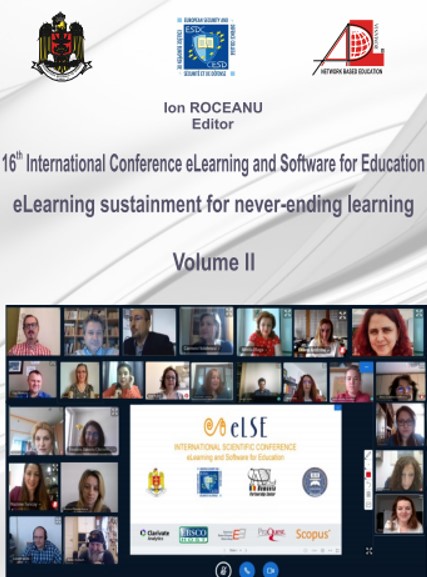INTEGRATION OF ROBOTICS PROJECTS IN THE PRE-UNIVERSITY EDUCATIONAL ENVIRONMENT
INTEGRATION OF ROBOTICS PROJECTS IN THE PRE-UNIVERSITY EDUCATIONAL ENVIRONMENT
Author(s): Marin OpreaSubject(s): Higher Education , ICT Information and Communications Technologies, Distance learning / e-learning
Published by: Carol I National Defence University Publishing House
Keywords: Arduino; IR sensors; line follower robot; ultrasonic sensor; obstacle avoiding robot;
Summary/Abstract: Our students must be prepared for the jobs of the future: smart home developer, specialist in human-robot interaction, augmented reality architect etc. They need to be encouraged to explore more, discover and understand how things work around them. Their training must be supported by Internet of Things (IoT), Robotics and Artificial Intelligence (AI) courses. These courses are part of the STEM educational model aimed to the integrated approach of Science, Technology, Engineering and Mathematics. The integration of these courses into school curriculum of pre-university education becomes a necessity. In this study I presented how to make two projects of Educational Robotics using the Arduino development platform and I analysed, from the point of view of methodological efficiency, the results obtained by implementing in class such projects. In the first project I showed how a line follower robot can be made. For this purpose I used the Arduino Uno development board, two DC motors with gearbox, a line tracking module with IR proximity sensors and a L298N dual H-Bridge motor driver module. The sensors emit IR beams to the surface on which the robot is located. The radiation reflected by it is detected by sensors that produce signals proportional to the degree of reflectance of the respective surface. Specifically, white surfaces generate strong reflection signals while dark surfaces strongly absorb IR radiation, producing a very weak reflection phenomenon. The IR signal detected by the sensors is sent for analysis to the Arduino board. If its value exceeds a set threshold, Arduino sends a command to the motor driver that the robot path is changed to the minimum IR reflectance area. In the second project I presented how to make a obstacle avoiding robot. As in the first project, I used the Arduino Uno development board, mounted on a chassis fitted with two DC motors with gearbox, controlled by a L298N driver module. To avoid obstacles I used an ultrasonic HC-SR04 sensor. Additionally, for controlling the robot with an Android smartphone, I added a HC-06 Bluetooth module. The ultrasonic sensor emits impulses in the environment in which the robot moves. When ultrasonic waves encounter an obstacle they are reflected on it and received by the sensor. The captured signal is sent by the sensor to the Arduino board where it is processed, the distance between the sensor and the obstacle being calculated. If the value of this distance is below a set threshold level, Arduino sends a command to the motor driver to change the path of the robot, thus avoiding collision with the detected obstacle. In the final part of the article I performed a comparative analysis of the results obtained in the STEM type preparation by the classes of students who developed projects of Educational Robotics in relation to the classes that have gone in a traditional direction of preparation.
Journal: Conference proceedings of »eLearning and Software for Education« (eLSE)
- Issue Year: 16/2020
- Issue No: 02
- Page Range: 190-198
- Page Count: 9
- Language: English

